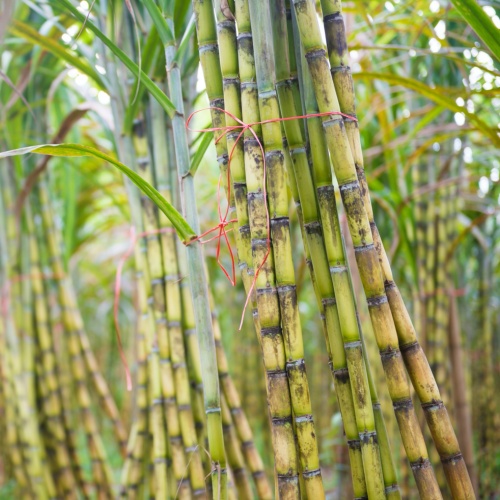Comprehending Cane Sugar Processing: A Comprehensive Introduction of the Stages
Comprehending Cane Sugar Processing: A Comprehensive Introduction of the Stages
Blog Article
An Extensive Overview to the Ecological Influence and Sustainability Practices in Cane Sugar Processing
The environmental influence of cane sugar handling offers a complex range of challenges that warrant mindful exam. From soil degradation and excessive water usage to the carbon impact linked with farming and production, the consequences of typical methods are far-reaching. What details practices can be implemented to strike an equilibrium between performance and environmental stewardship?
Overview of Walking Cane Sugar Processing
Walking cane sugar processing entails a collection of methodical actions that change sugarcane into polished sugar. Initially, gathered sugarcane is delivered to processing centers, where it goes through cleaning to get rid of soil and particles. Following this, the cane is crushed to remove juice, which is then made clear by removing contaminations with heating and the addition of lime.
The clarified juice undergoes evaporation, where water is gotten rid of to concentrate the sugar material. This focused syrup is then taken shape via cooling, permitting sugar crystals to form. These crystals are separated from the continuing to be syrup utilizing centrifugation, causing raw sugar. To achieve polished sugar, the raw product undertakes further purification procedures, which might consist of filtering system and cleaning to eliminate continuing to be impurities and color.
The end product is then dried and packaged for circulation. Throughout this whole procedure, maintaining efficiency and high quality control is necessary to make certain the sugar meets market requirements. Each action in walking cane sugar handling not just adds to the final product but also has ramifications for source usage and waste generation, establishing the stage for discussions on sustainability and environmental impacts connected with sugar production.
Environmental Difficulties of Manufacturing
The manufacturing of cane sugar presents several significant environmental challenges that warrant focus. One key issue is the substantial usage of agrochemicals, consisting of pesticides and fertilizers, which can lead to dirt destruction, biodiversity loss, and contamination of local water resources. The drainage from sugarcane areas often lugs these chemicals right into neighboring ecosystems, disrupting aquatic life and influencing the wellness of neighborhoods reliant on these water bodies.
One more difficulty is the high energy consumption related to sugarcane handling. The boiling and refining stages require considerable heat, primarily generated by melting nonrenewable fuel sources, adding to greenhouse gas exhausts. Furthermore, the extensive land location needed for sugarcane growing can lead to logging and habitat destruction, additional aggravating climate change and threatening wildlife.
In addition, the labor techniques in some areas raise ethical issues, as workers may encounter bad working problems and insufficient incomes. This circumstance typically perpetuates a cycle of destitution in local areas. Cane Sugar Processing. Dealing with these ecological challenges is critical for establishing much more lasting practices in walking cane sugar production, eventually profiting both the environment and the neighborhoods entailed in this market
Water and Land Usage Impact
Water sources and land utilization are important components in the walking stick sugar sector that considerably influence the environment. The cultivation of sugarcane needs substantial water input, with quotes recommending that it can consume up to 2,000 liters of water per kilo of sugar produced. This intensive use water usually results in deficiency of local water resources, impacting not just the sugarcane haciendas but also surrounding ecological communities and communities that rely upon the very same water sources for agriculture and domestic use.

Furthermore, land usage for sugarcane cultivation can bring about logging and the conversion of natural environments right into monoculture vineyards. This practice reduces biodiversity, interferes with regional ecosystems, and adds to dirt degradation. The growth of sugarcane areas commonly trespasses on beneficial agricultural land, producing competitors for sources between food and biofuel manufacturing.
Lasting practices, such as enhancing watering techniques and carrying out plant rotation, are necessary to minimize these impacts. By embracing extra efficient water usage and land monitoring approaches, the cane sugar market can reduce its ecological footprint, making sure an equilibrium in between agricultural productivity and environmental conservation.
Greenhouse Gas Emissions
Greenhouse gas exhausts stand for a significant environmental problem within the cane sugar handling industry, particularly as agricultural methods expand to meet worldwide need. The farming of sugarcane, a crop that flourishes in tropical environments, counts greatly on artificial plant foods and chemicals, which add to nitrous oxide exhausts. In addition, land-use changes, including deforestation for new sugarcane ranches, release carbon dioxide stored in vegetation and soil.
Throughout handling, energy consumption is an additional significant source of greenhouse gas emissions - Cane Sugar Processing. Several sugar mills make use of nonrenewable fuel sources to power machinery and generate warm, resulting in considerable carbon impacts. Moreover, the transportation of raw sugarcane and ended up items adds layers of exhausts with fuel burning in cars
This includes evaluating existing agricultural methods, refining methods, and transportation systems to recognize areas for enhancement and mitigation. Dealing with greenhouse gas exhausts is important for promoting a more sustainable walking cane sugar industry in an altering environment.

Sustainable Practices and Innovations
Lasting techniques and technologies are significantly crucial in the walking stick sugar processing sector content as stakeholders seek to lower environmental impacts while keeping productivity. One substantial improvement is the implementation of incorporated crop administration, which optimizes source use by incorporating soil monitoring, insect control, and plant rotation methods. This approach boosts yield while lessening chemical inputs and preserving dirt health.
Additionally, the adoption of renewable resource resources, such as biomass from sugarcane residues, has obtained traction - Cane Sugar Processing. By transforming waste items into power, refining facilities can minimize their dependence on nonrenewable fuel sources, consequently lowering greenhouse gas discharges
Water administration techniques have likewise seen renovations through the recycling and reusing of water in handling plants, significantly minimizing freshwater consumption. Developments in modern technology, such as precision agriculture, make it possible for farmers to monitor crop health and wellness and resource try these out use extra effectively, making sure lasting farming practices.
Additionally, accreditation programs like Fair Profession and Rain forest Alliance encourage environmentally accountable farming methods and advertise social equity within the supply chain. By embracing these sustainable practices and advancements, the walking stick sugar handling sector can boost its strength and add favorably to ecological stewardship.
Verdict
The ecological influence of cane sugar processing provides significant challenges, including soil destruction, high water consumption, and greenhouse gas emissions, together with moral problems associated with labor techniques. Addressing these issues through sustainable techniques, such as incorporated plant administration, renewable resource adoption, and water recycling, is important. By promoting environmentally liable and socially fair approaches in sugar production, the industry can mitigate its damaging results, making sure a much more sustainable future for both communities and ecological communities associated with this market.
Walking cane sugar pop over to this site processing includes a series of methodical steps that change sugarcane into refined sugar. Each action in walking stick sugar processing not only adds to the last item but also has effects for resource usage and waste generation, setting the phase for discussions on sustainability and ecological effects connected with sugar production.
Greenhouse gas discharges stand for a substantial environmental problem within the cane sugar handling market, particularly as farming practices broaden to meet worldwide need.Sustainable techniques and advancements are increasingly crucial in the cane sugar handling industry as stakeholders seek to lower environmental effects while maintaining efficiency.The ecological impact of walking stick sugar handling presents considerable obstacles, including soil deterioration, high water usage, and greenhouse gas emissions, alongside honest problems associated to labor methods.
Report this page